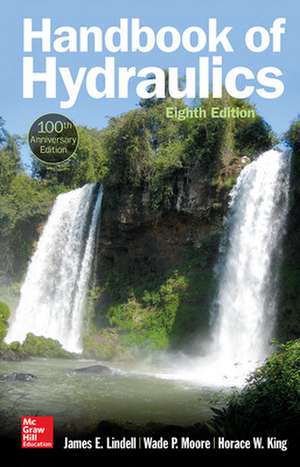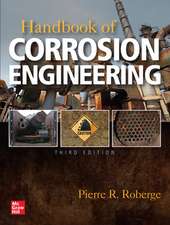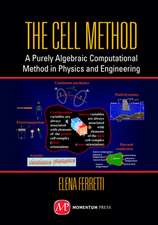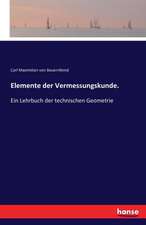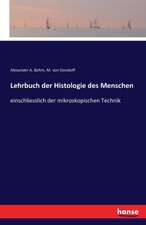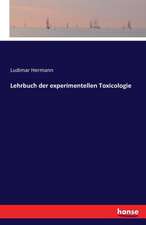Handbook of Hydraulics, Eighth Edition
Autor James Lindell, Wade Moore, Horace Kingen Limba Engleză Hardback – 2 dec 2017
Fully Updated Hydraulics Engineering Concepts, Methods, and Practices
This thoroughly revised resource offers comprehensive coverage of every aspect of hydraulics. Handbook of Hydraulics, Eighth Edition, features the latest data and computational modeling techniques and clearly explains cutting-edge methods, processes, and technologies. You will get more than 80 dependable tables and graphs, sample equations, and real-world examples. This single source for on-the-job hydraulics engineering information will save time and ensure accuracy in performing hydraulic calculations.
Coverage includes:
•Fluid properties and hydraulic units
•Hydrostatics
•Fundamental concepts of fluid flow
•Orifices, gates, and valves
•Weirs
•Pipes
•Steady uniform flow in open channels
•Open channels with non-uniform flow
•High-velocity transitions
•Wave motion and forces
•Spatially variable and unsteady flow
•Measurement of flowing water
•Computational hydraulics
•Physical and mathematical modeling of hydraulic structures
Preț: 969.99 lei
Preț vechi: 1418.90 lei
-32% Nou
Puncte Express: 1455
Preț estimativ în valută:
185.63€ • 201.57$ • 155.93£
185.63€ • 201.57$ • 155.93£
Carte tipărită la comandă
Livrare economică 24-30 aprilie
Preluare comenzi: 021 569.72.76
Specificații
ISBN-13: 9781259859687
ISBN-10: 1259859681
Pagini: 416
Dimensiuni: 185 x 236 x 26 mm
Greutate: 0.72 kg
Ediția:8
Editura: McGraw Hill Education
Colecția McGraw-Hill
Locul publicării:United States
ISBN-10: 1259859681
Pagini: 416
Dimensiuni: 185 x 236 x 26 mm
Greutate: 0.72 kg
Ediția:8
Editura: McGraw Hill Education
Colecția McGraw-Hill
Locul publicării:United States
Cuprins
Preface to the Eighth Edition
Preface to the First Edition
Section 1 Fluid Properties and Hydraulic Units
Fluid Properties
Hydraulic Units
Reference
Section 2 Hydrostatics
Fluid Pressure
Atmospheric Pressure
Manometers
Pressure Forces on Plane Surfaces
Pressure Forces on Curved Surfaces
Uniform Pressure on Cylindrical Surfaces
Uniform Pressure on Spherical Surfaces
Pressures on Spillway Sections of Dams
Uplift Pressure on Dams
Stability of Dams
References
Section 3 Fundamental Concepts of Fluid Flow
Classification of Flow
Continuity
Energy and the Bernoulli Equation
Siphons
Venturi Meters
Cavitation
Momentum Concepts
Dimensional Analysis and Similitude
References
Section 4 Orifices, Gates, and Tubes
Fundamental Equations
Path of Jet
Orifices under Low Heads
Discharge under Falling Head
Orifice Coefficients
Submerged Orifices
Gates
Pipe Orifices
Tubes
Standard Short Tubes
Nozzles
Submerged Tubes
Culverts
References
Section 5 Weirs
Fundamental Principles
Sharp-Crested Weirs
Horizontal Sharp-Crested Weirs with L/b = 1
Horizontal Sharp-Crested Weirs with End Contractions
V-Notch Weirs
Submerged Sharp-Crested Weirs
Weirs Not Sharp-Crested
Broad-Crested Weirs
Weirs of Triangular Section
Weirs of Trapezoidal Section
Weirs of Irregular Section
Spillway Sections
Selection and Use of Weirs
Weirs for Measuring Stream Flow
References
Section 6 Pipes
Fundamental Principles
Loss of Energy due to Friction
Laminar Flow in Pipes
Turbulent Flow in Pipes
Selection of Energy-Loss Equation and Friction Factor
Minor Losses
Loss at Entrance
Loss of Head due to Enlargement
Loss of Head due to Contraction
Loss of Head due to Gate Valves
Loss of Head due to Bends
Compound Pipes
Distribution Networks
Hardy Cross Solution
Nodal Method
References
Section 7 Steady Uniform Flow in Open Channels
Elements of a Cross Section
Sectional Forms
Most Efficient Channel Section
Energy Losses in Open Channels
Laminar Flow with Free Surface
Turbulent Flows in Open Channels
The Manning Equation
Roughness Coefficients
Noneroding Velocities
Air Entrainment
References
Section 8 Open Channels with Nonuniform Flow
Rapidly Varied Flow
Constant-Discharge Relations
Constant-Energy Relations
Analytical Solutions of Constriction Problems
Critical Depth—General Case
Critical Depth in Rectangular Channels
Critical Depth in Triangular Channels
Critical Depth in Trapezoidal Sections
Critical Depth in Circular Channels
Critical-Depth Meters
Critical Slope
Channel Entrance
Free Outfall
Hydraulic Jump
Hydraulic Jump for Small Slopes
Force Equation
Hydraulic-Jump Computations
Hydraulic Jump in Trapezoidal Channels
Hydraulic Jump in Rectangular Channels
Hydraulic Jump in Sloping Channels
Length of Jump
Position of Jump
Minor Losses
Transition through Critical Depth without Jump
Gradually Varied Flow
Equations of Gradually Varied Flow and Generalized Profiles
Methods of Computing Water-Surface Profiles
Short Channels
Chutes
Flow over Very Steep Inclines
References
Section 9 High-Velocity Transitions
Straight-Walled Constrictions
Enlargements and Curved-Wall Constrictions
Method of Characteristics
High-Velocity Flow at Channel Bends
References
Section 10 Wave Motion and Forces
Oscillatory Waves
Surface Form
Wave Celerity
Wavelength
Orbital Motion
Group Velocity and Energy Transmission
Refraction
Variation of Wave Height with Depth
Breaking Waves
Characteristics of Wind-Generated Waves
Wave Run-Up and Overtopping
Wave Forces
Wave Forces on Piling and Submerged Structures
Wind Tides
Translatory Waves
Positive Waves
Negative Waves
References
Section 11 Spatially Variable and Unsteady Flow
Unsteady Open-Channel Flow
Steady Spatially Variable Flow
Unsteady Flow with Free Surface
Water Hammer
Pressure When T ≦ 2L/α
Pressure When T ≧ 2L/α
References
Section 12 Measurement of Flowing Water
Current Meter
Pitot Tube
Color Method
Salt-Velocity Method
Gibson Method
Venturi Meter
Pipe Orifice
Standardized Nozzles
California-Pipe Method
Venturi Flume
Critical-Depth Meter
Contracted Opening
Chemical Gauging
Electromagnetic Flowmeters
References
Section 13 Computational Hydraulics
Elementary Computational Concepts
Solution by Successive Approximations
Steady Nonuniform Flow in Prismatic Open Channels
Steady Flow in Pipes
Experimental Measurements—Least-Squares Analysis
Unsteady Flow in Pipes and Open Channels
Advanced Numerical Methods
Finite-Difference Method
Finite-Element Method
References
Section 14 Physical and Mathematical Modeling of Hydraulic Structures
Introduction
Composite Modeling
Physical Modeling Overview
Numerical Modeling Overview
Composite Modeling Overview
Summary and Conclusions
References
Index
Preface to the First Edition
Section 1 Fluid Properties and Hydraulic Units
Fluid Properties
Hydraulic Units
Reference
Section 2 Hydrostatics
Fluid Pressure
Atmospheric Pressure
Manometers
Pressure Forces on Plane Surfaces
Pressure Forces on Curved Surfaces
Uniform Pressure on Cylindrical Surfaces
Uniform Pressure on Spherical Surfaces
Pressures on Spillway Sections of Dams
Uplift Pressure on Dams
Stability of Dams
References
Section 3 Fundamental Concepts of Fluid Flow
Classification of Flow
Continuity
Energy and the Bernoulli Equation
Siphons
Venturi Meters
Cavitation
Momentum Concepts
Dimensional Analysis and Similitude
References
Section 4 Orifices, Gates, and Tubes
Fundamental Equations
Path of Jet
Orifices under Low Heads
Discharge under Falling Head
Orifice Coefficients
Submerged Orifices
Gates
Pipe Orifices
Tubes
Standard Short Tubes
Nozzles
Submerged Tubes
Culverts
References
Section 5 Weirs
Fundamental Principles
Sharp-Crested Weirs
Horizontal Sharp-Crested Weirs with L/b = 1
Horizontal Sharp-Crested Weirs with End Contractions
V-Notch Weirs
Submerged Sharp-Crested Weirs
Weirs Not Sharp-Crested
Broad-Crested Weirs
Weirs of Triangular Section
Weirs of Trapezoidal Section
Weirs of Irregular Section
Spillway Sections
Selection and Use of Weirs
Weirs for Measuring Stream Flow
References
Section 6 Pipes
Fundamental Principles
Loss of Energy due to Friction
Laminar Flow in Pipes
Turbulent Flow in Pipes
Selection of Energy-Loss Equation and Friction Factor
Minor Losses
Loss at Entrance
Loss of Head due to Enlargement
Loss of Head due to Contraction
Loss of Head due to Gate Valves
Loss of Head due to Bends
Compound Pipes
Distribution Networks
Hardy Cross Solution
Nodal Method
References
Section 7 Steady Uniform Flow in Open Channels
Elements of a Cross Section
Sectional Forms
Most Efficient Channel Section
Energy Losses in Open Channels
Laminar Flow with Free Surface
Turbulent Flows in Open Channels
The Manning Equation
Roughness Coefficients
Noneroding Velocities
Air Entrainment
References
Section 8 Open Channels with Nonuniform Flow
Rapidly Varied Flow
Constant-Discharge Relations
Constant-Energy Relations
Analytical Solutions of Constriction Problems
Critical Depth—General Case
Critical Depth in Rectangular Channels
Critical Depth in Triangular Channels
Critical Depth in Trapezoidal Sections
Critical Depth in Circular Channels
Critical-Depth Meters
Critical Slope
Channel Entrance
Free Outfall
Hydraulic Jump
Hydraulic Jump for Small Slopes
Force Equation
Hydraulic-Jump Computations
Hydraulic Jump in Trapezoidal Channels
Hydraulic Jump in Rectangular Channels
Hydraulic Jump in Sloping Channels
Length of Jump
Position of Jump
Minor Losses
Transition through Critical Depth without Jump
Gradually Varied Flow
Equations of Gradually Varied Flow and Generalized Profiles
Methods of Computing Water-Surface Profiles
Short Channels
Chutes
Flow over Very Steep Inclines
References
Section 9 High-Velocity Transitions
Straight-Walled Constrictions
Enlargements and Curved-Wall Constrictions
Method of Characteristics
High-Velocity Flow at Channel Bends
References
Section 10 Wave Motion and Forces
Oscillatory Waves
Surface Form
Wave Celerity
Wavelength
Orbital Motion
Group Velocity and Energy Transmission
Refraction
Variation of Wave Height with Depth
Breaking Waves
Characteristics of Wind-Generated Waves
Wave Run-Up and Overtopping
Wave Forces
Wave Forces on Piling and Submerged Structures
Wind Tides
Translatory Waves
Positive Waves
Negative Waves
References
Section 11 Spatially Variable and Unsteady Flow
Unsteady Open-Channel Flow
Steady Spatially Variable Flow
Unsteady Flow with Free Surface
Water Hammer
Pressure When T ≦ 2L/α
Pressure When T ≧ 2L/α
References
Section 12 Measurement of Flowing Water
Current Meter
Pitot Tube
Color Method
Salt-Velocity Method
Gibson Method
Venturi Meter
Pipe Orifice
Standardized Nozzles
California-Pipe Method
Venturi Flume
Critical-Depth Meter
Contracted Opening
Chemical Gauging
Electromagnetic Flowmeters
References
Section 13 Computational Hydraulics
Elementary Computational Concepts
Solution by Successive Approximations
Steady Nonuniform Flow in Prismatic Open Channels
Steady Flow in Pipes
Experimental Measurements—Least-Squares Analysis
Unsteady Flow in Pipes and Open Channels
Advanced Numerical Methods
Finite-Difference Method
Finite-Element Method
References
Section 14 Physical and Mathematical Modeling of Hydraulic Structures
Introduction
Composite Modeling
Physical Modeling Overview
Numerical Modeling Overview
Composite Modeling Overview
Summary and Conclusions
References
Index
